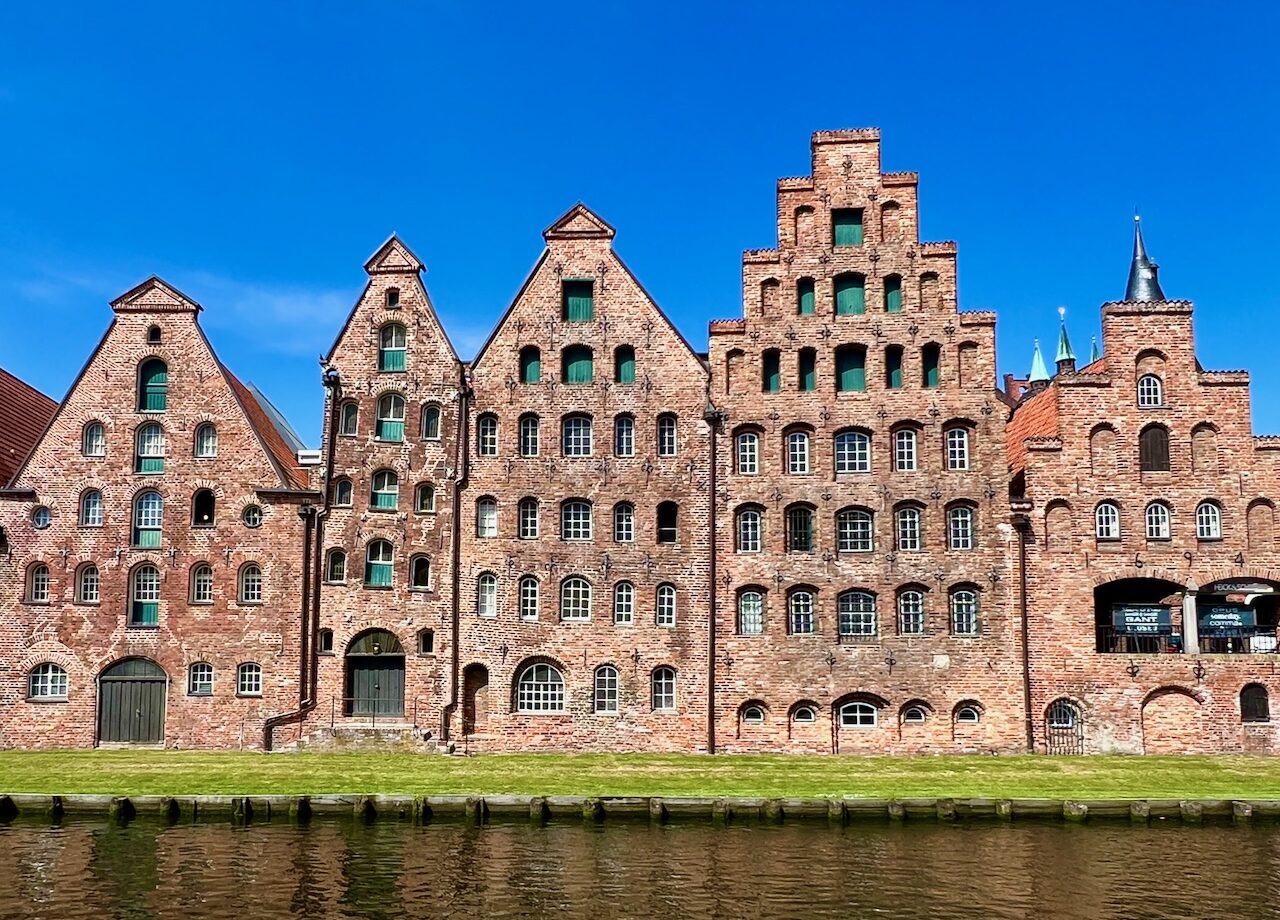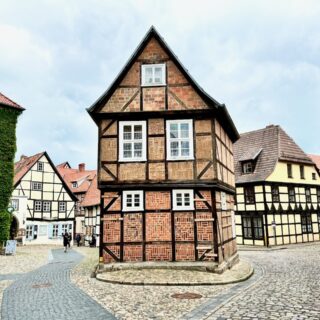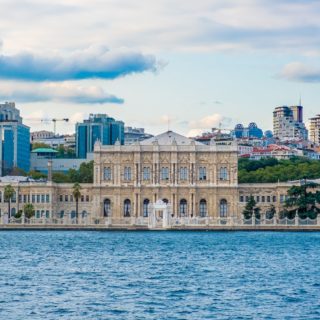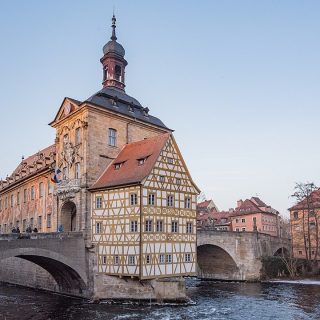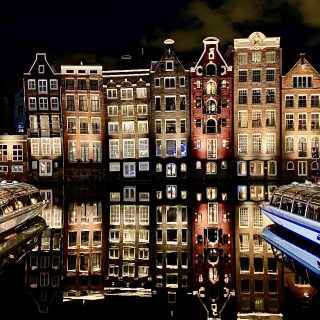Lübeck, nestled on an island in the River Trave in northern Germany, is a fascinating city renowned for its Brick Gothic medieval architecture, UNESCO World Heritage properties, and cultural allure. Known as the ‘City of the Seven Spires’, Lübeck suffered severe damage during WWII but the spires and medieval monuments have been beautifully restored. As you stroll through the vibrant streets and cobblestone lanes, you’ll find yourself transported back in time to an era when Lübeck was a thriving centre of trade and the capital of the Hanseatic League, a medieval grouping of northern European merchant cities. Join me on a walking tour to uncover the top things to see in Lübeck.
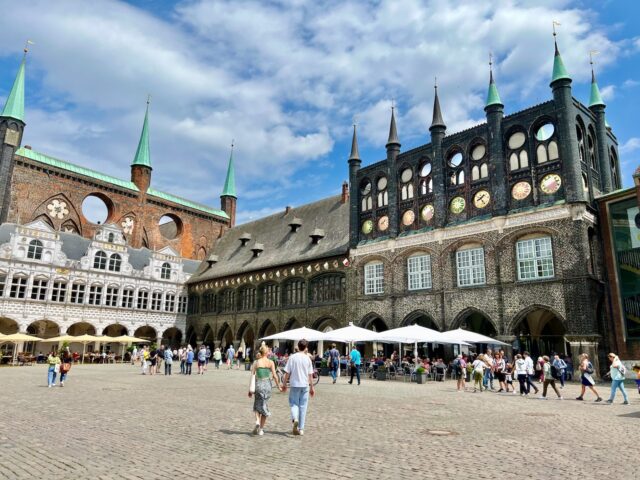
Things to see in Lübeck on a walk around the old town
Situated about an hour’s drive or train ride away from Hamburg, Lübeck makes for an easy day trip. Lübeck is also a must-visit if you’re on a Northern Germany road trip. If you’re driving, I suggest parking at the Parkhaus Holstentor garage. The first stop of this Lübeck walking route is just a stone’s throw away.
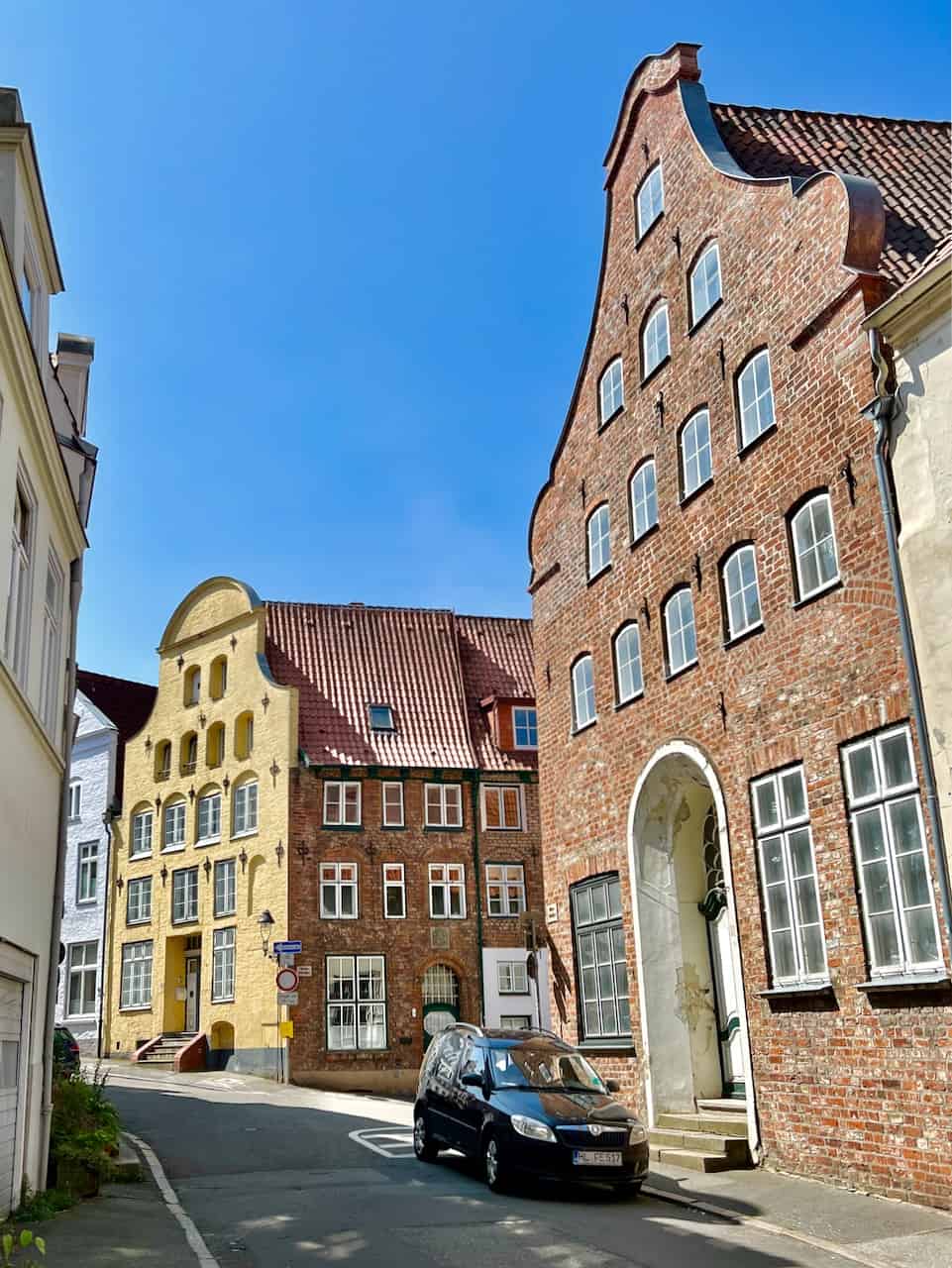
This walking route along the top sights in Lübeck can easily be done in a day but I recommend spending 1-2 nights in this gorgeous city to truly immerse yourself in its age-old history and culture. Search for hotels in Lübeck (Booking.com).
1. Holstentor Gate
The first stop on this Lübeck walking tour is the iconic Holstentor Gate. This grand medieval gate, with its twin towers and distinctive Gothic architecture, stands as a symbol of the city’s historic past. Built in the 15th century, it now houses a museum showcasing Lübeck’s history and serves as a gateway to the enchanting old town.
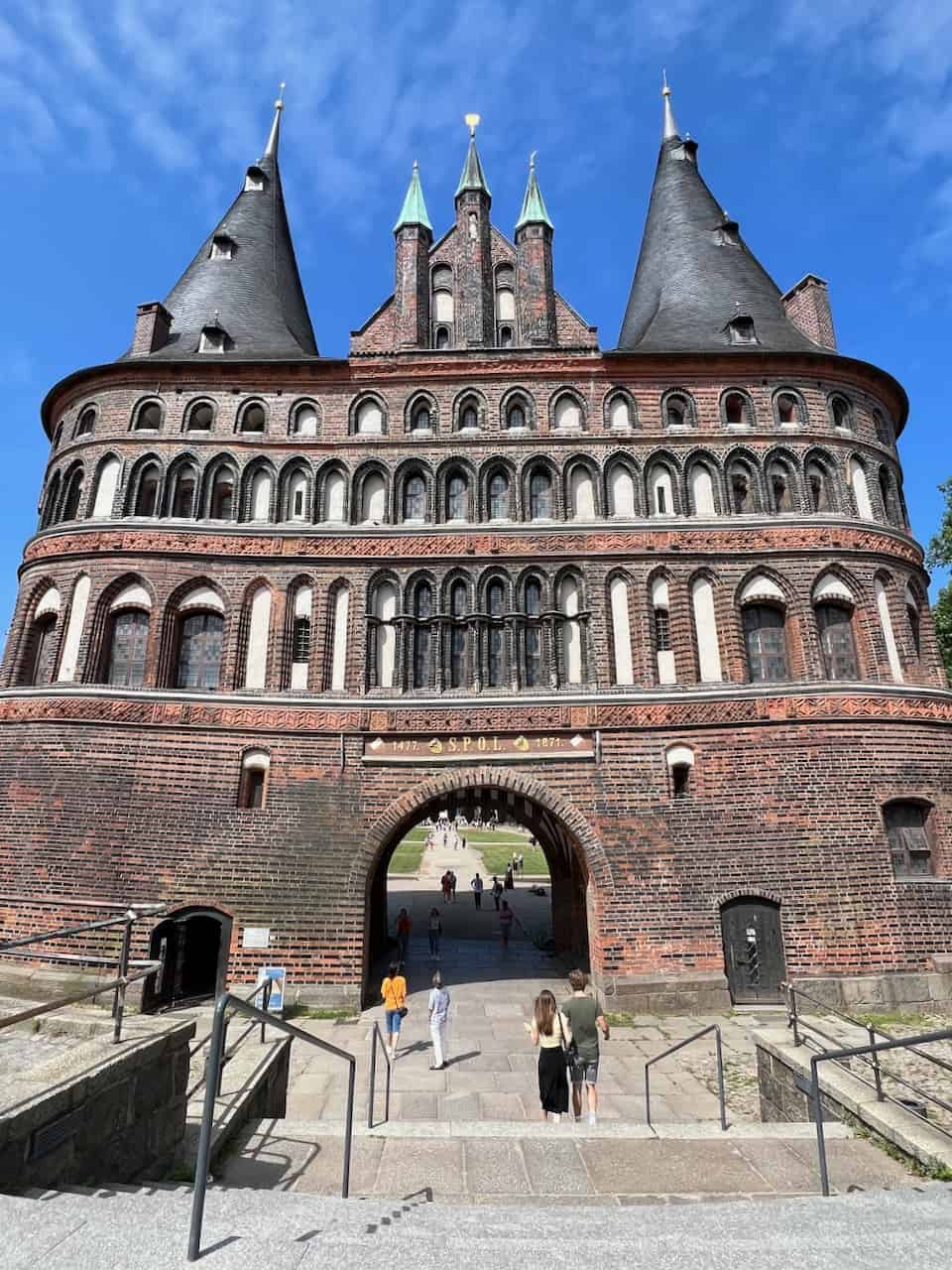
2. Salzspeicher
Across the road from the Holstentor Gate, you’ll find the Salzspeicher, a row of six historic warehouses on the banks of the Trave River. The oldest of these is from 1579 and the newest dates to 1745. These warehouses were used to store salt brought from Lüneberg before being transported to Scandinavia.
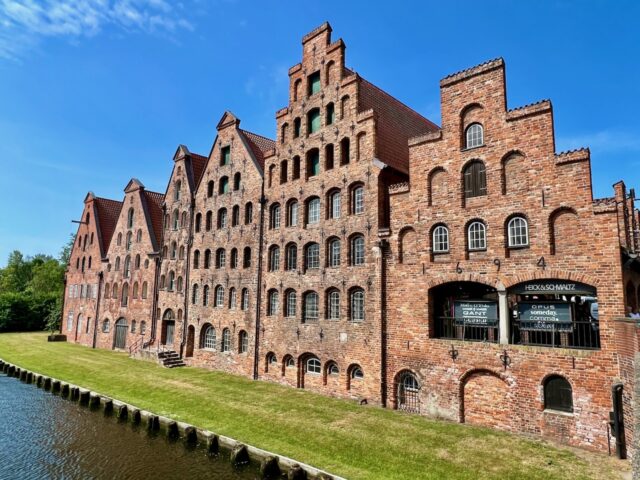
From here, head up the small hill to St. Peter’s Church or continue to the Lübeck City Hall. At St. Peter’s Church, it’s possible to climb the tower for a panoramic view of the city and its red-roofed buildings.
3. Lübeck City Hall
The majestic Lübeck City Hall (Stadtverwaltung) is an architectural masterpiece dating back to the 13th century. Its striking facade is adorned with ornate statues and intricate detailing. There are several tours a day on weekdays which take visitors through the various rooms and halls such as the Audience Hall. Inside, discover the rich history and cultural significance of this magnificent building.
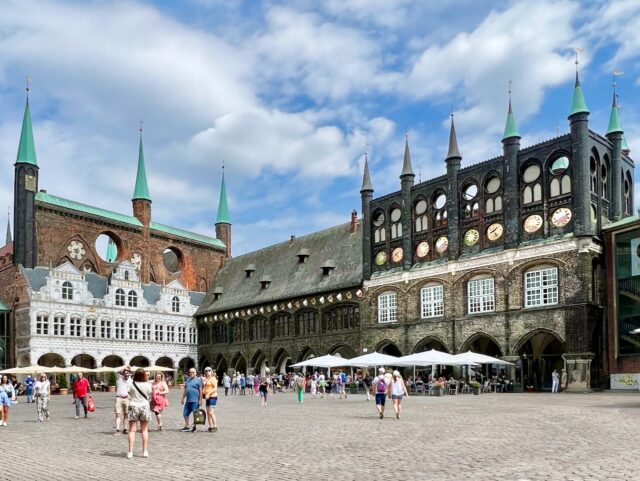
4. Niederegger Marzipan
No visit to Lübeck would be complete without indulging in the city’s famous marzipan. Lübeck marzipan became famous in the 18th century due to its unique recipe which includes a high almond content. Head to Niederegger (just behind the City Hall), the renowned marzipan manufacturer with a legacy spanning over two centuries. Treat your taste buds to an array of delicious marzipan creations, from classic bars to elaborate pralines. Don’t forget to bring some home as a sweet souvenir.
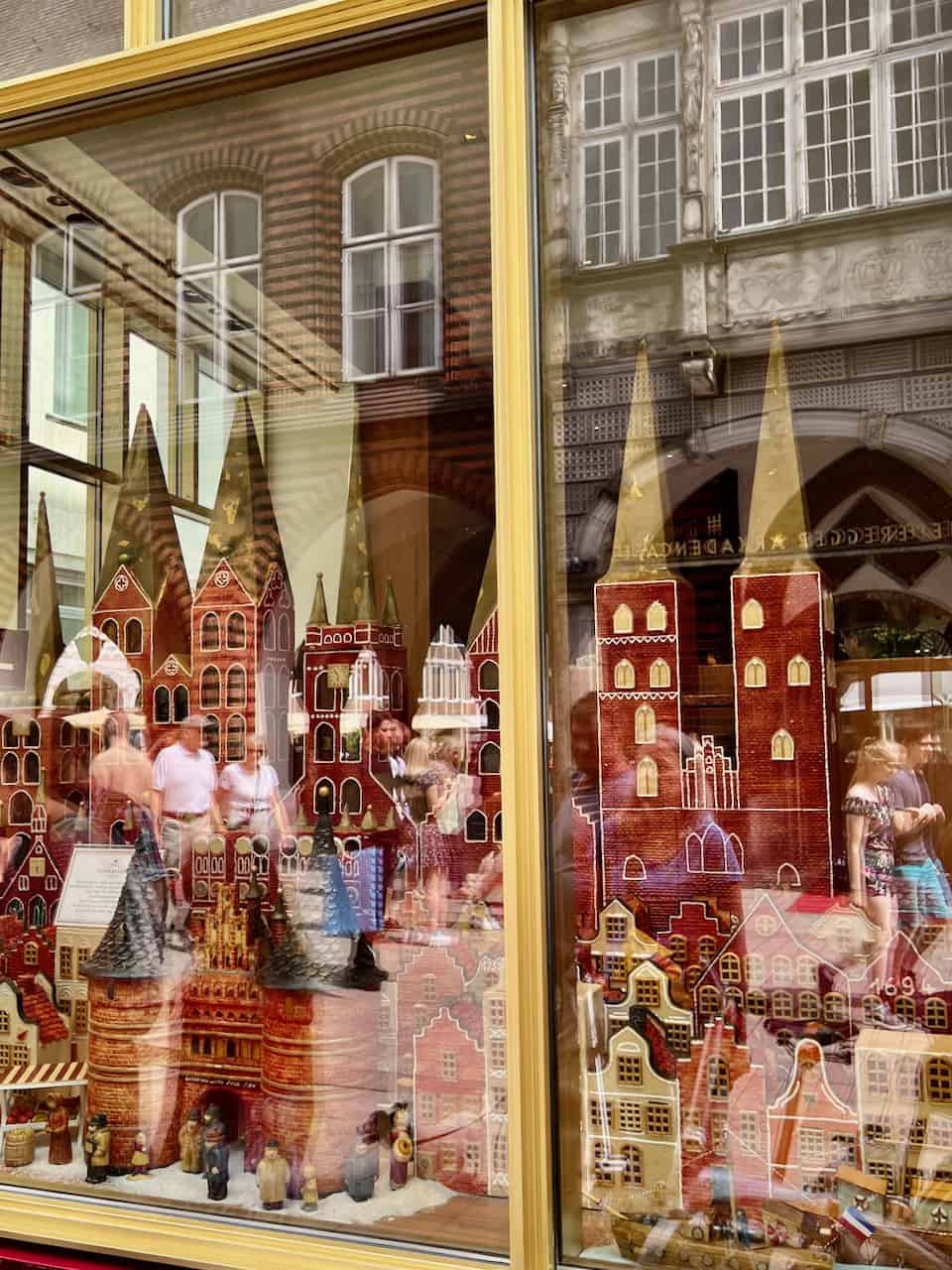
5. Marienkirche (St. Mary’s Church)
A short walk from the City Hall, you’ll find the 14th century Marienkirche (St. Mary’s Church), one of the top things to see in Lübeck. The most prominent example of the Brick Gothic style, this beautiful church, with its twin bell-towers, boasts the highest brick vault in the world and houses an extraordinary art collection. Don’t miss a chance to see the impressive bronze baptismal font and the sandstone reliefs in the ambulatory, both remarkable pieces of craftsmanship.
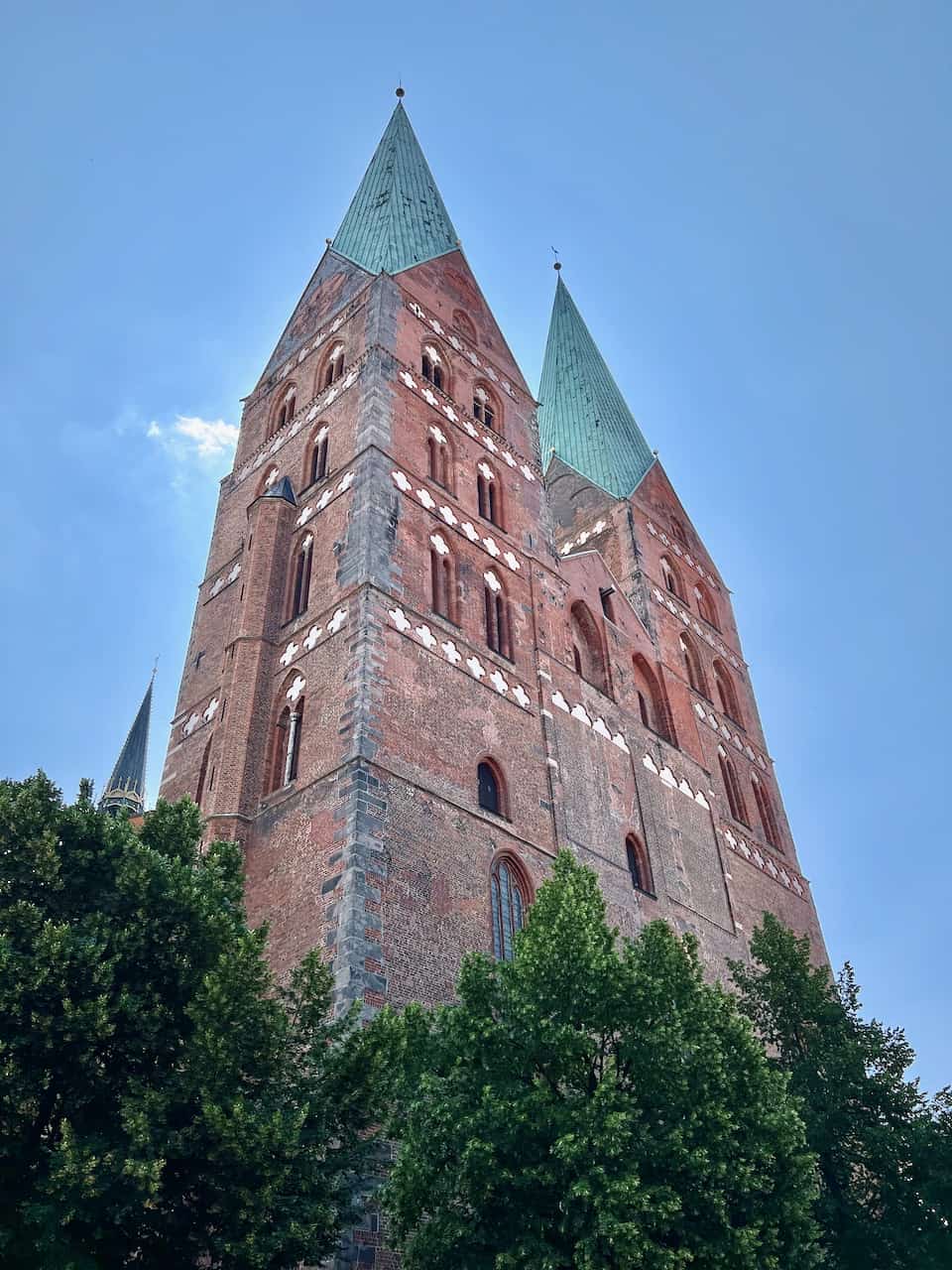
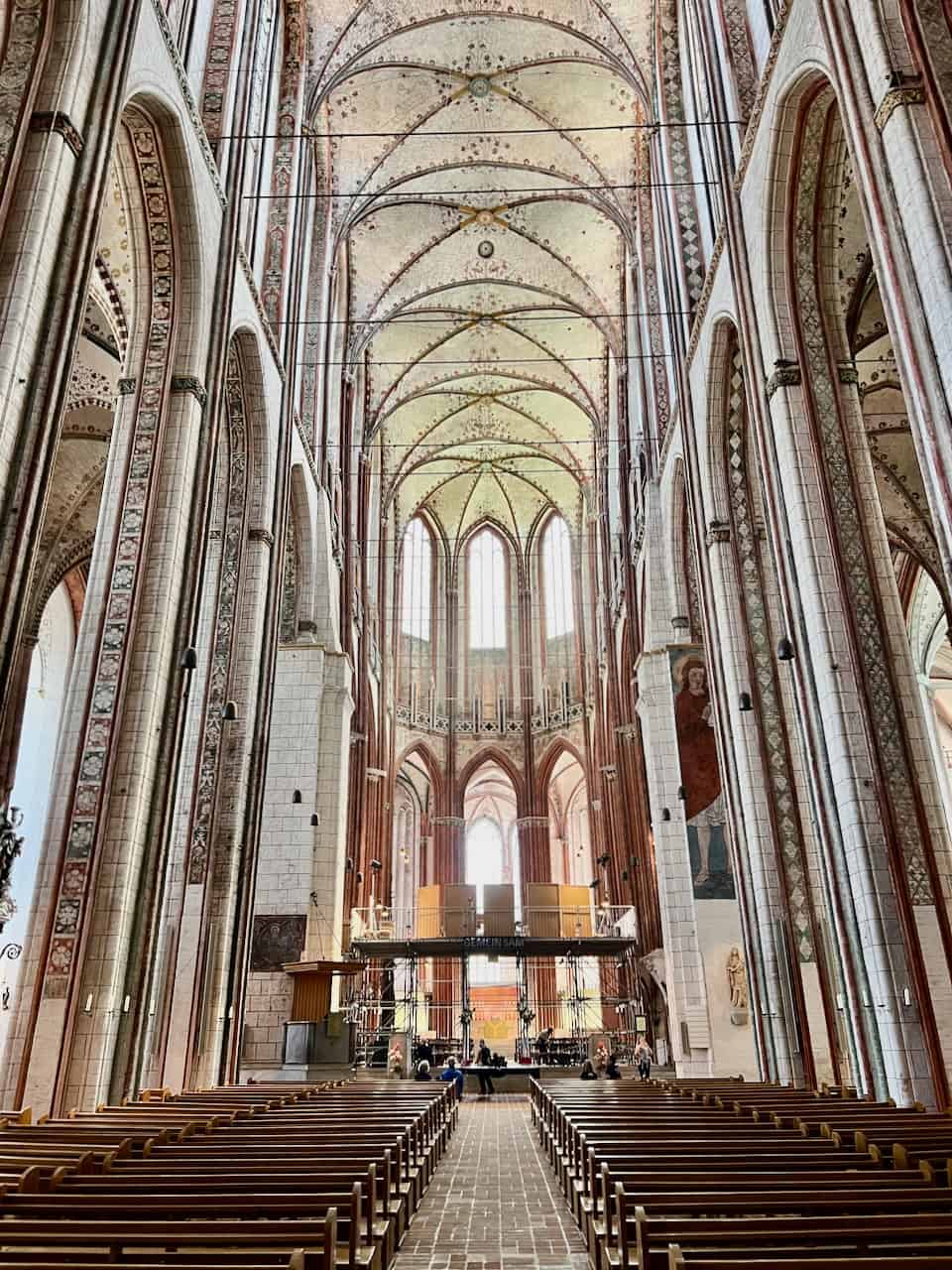
6. Alleys and hidden courtyards
Continue up Schüsselbuden (street) and Engelswisch into a quieter part of Lübeck. Here, you’ll find several opportunities to venture off into quaint alleys and discover hidden courtyards.
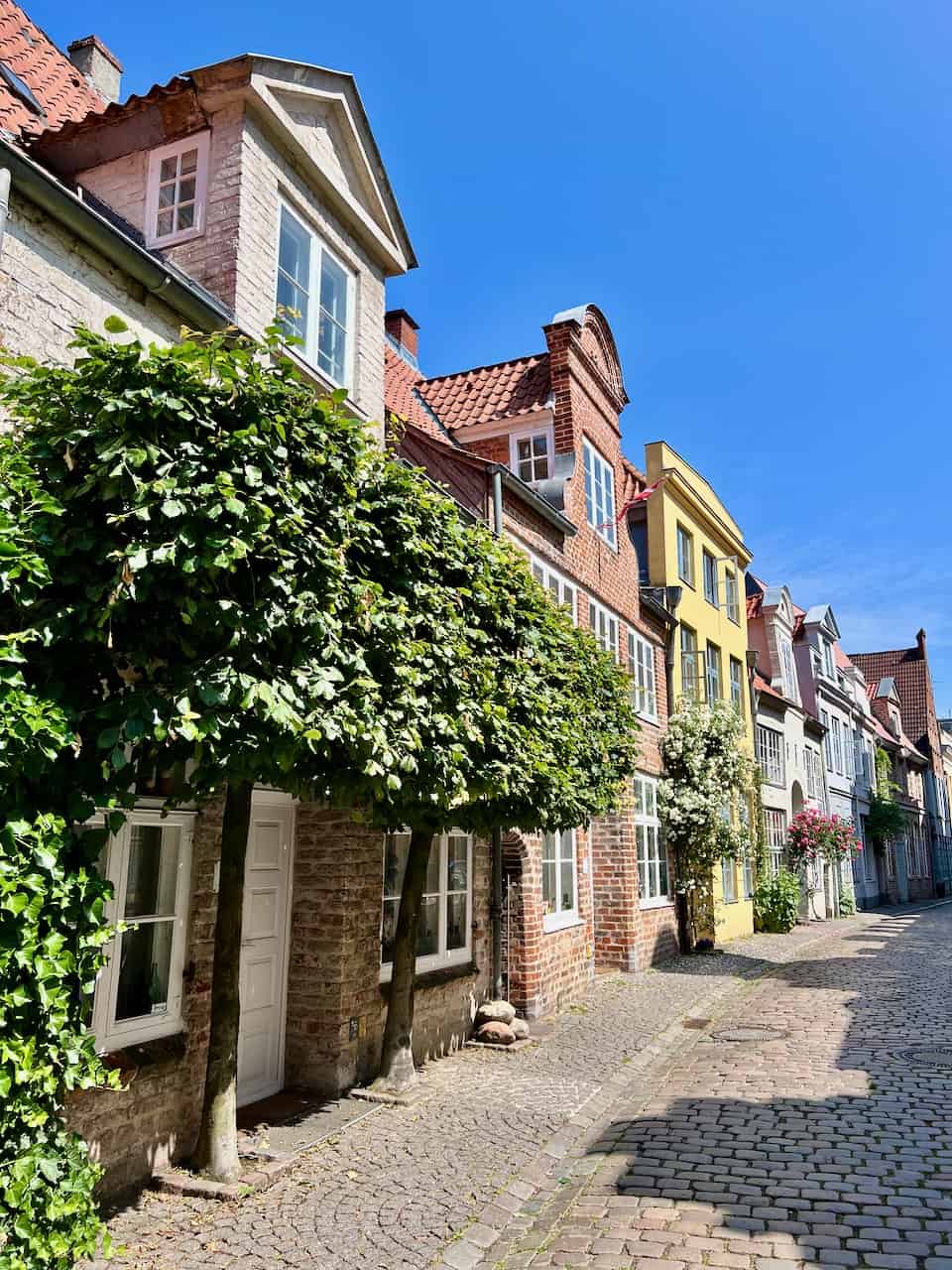
One unique alley is the Hellgrüner Gang, a low, narrow alley that opens up into a charming courtyard. If you don’t want to risk bumping your head, choose the Thorweg across the road. Please respect the people who live here by keeping noise levels low.
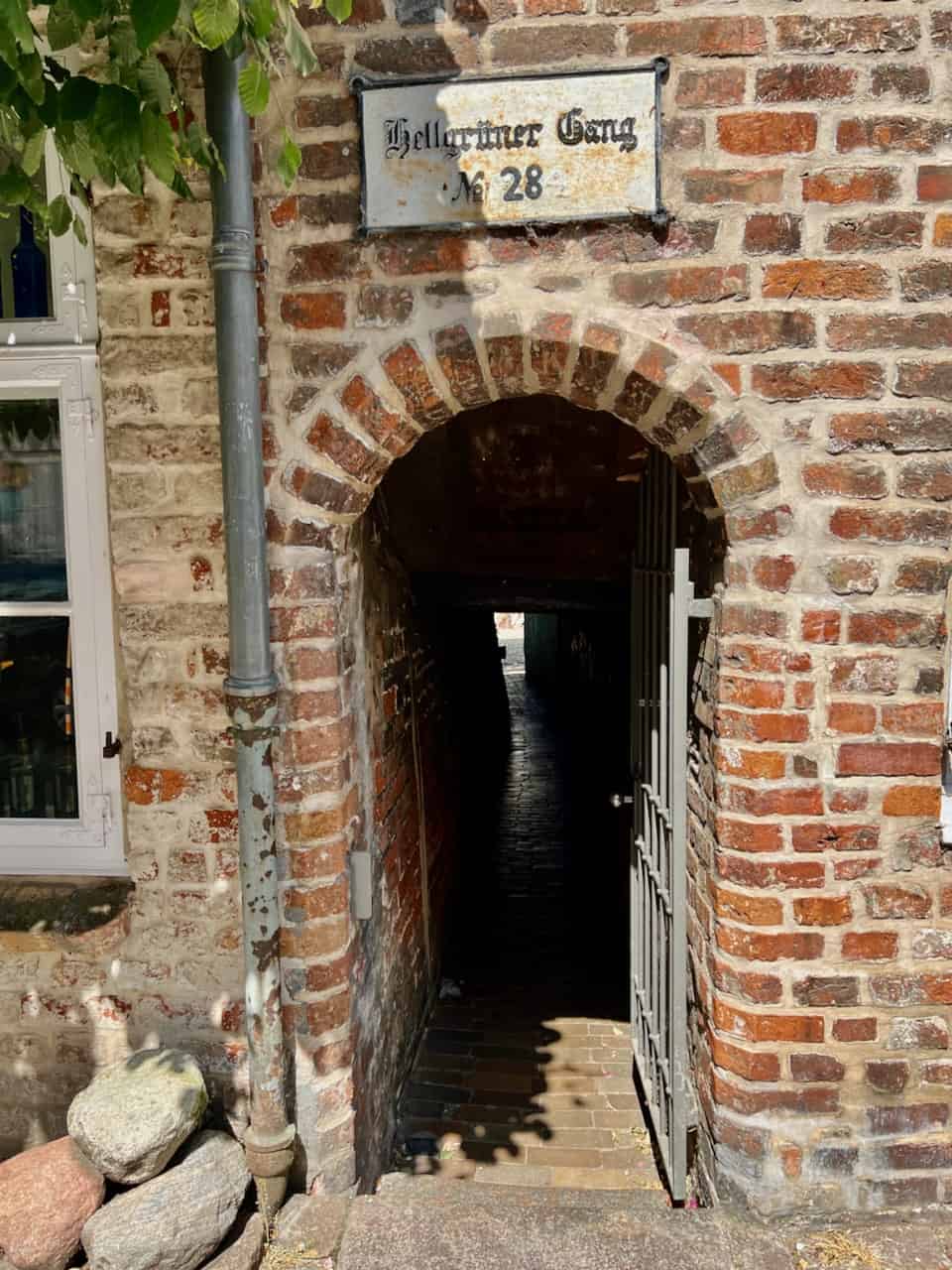
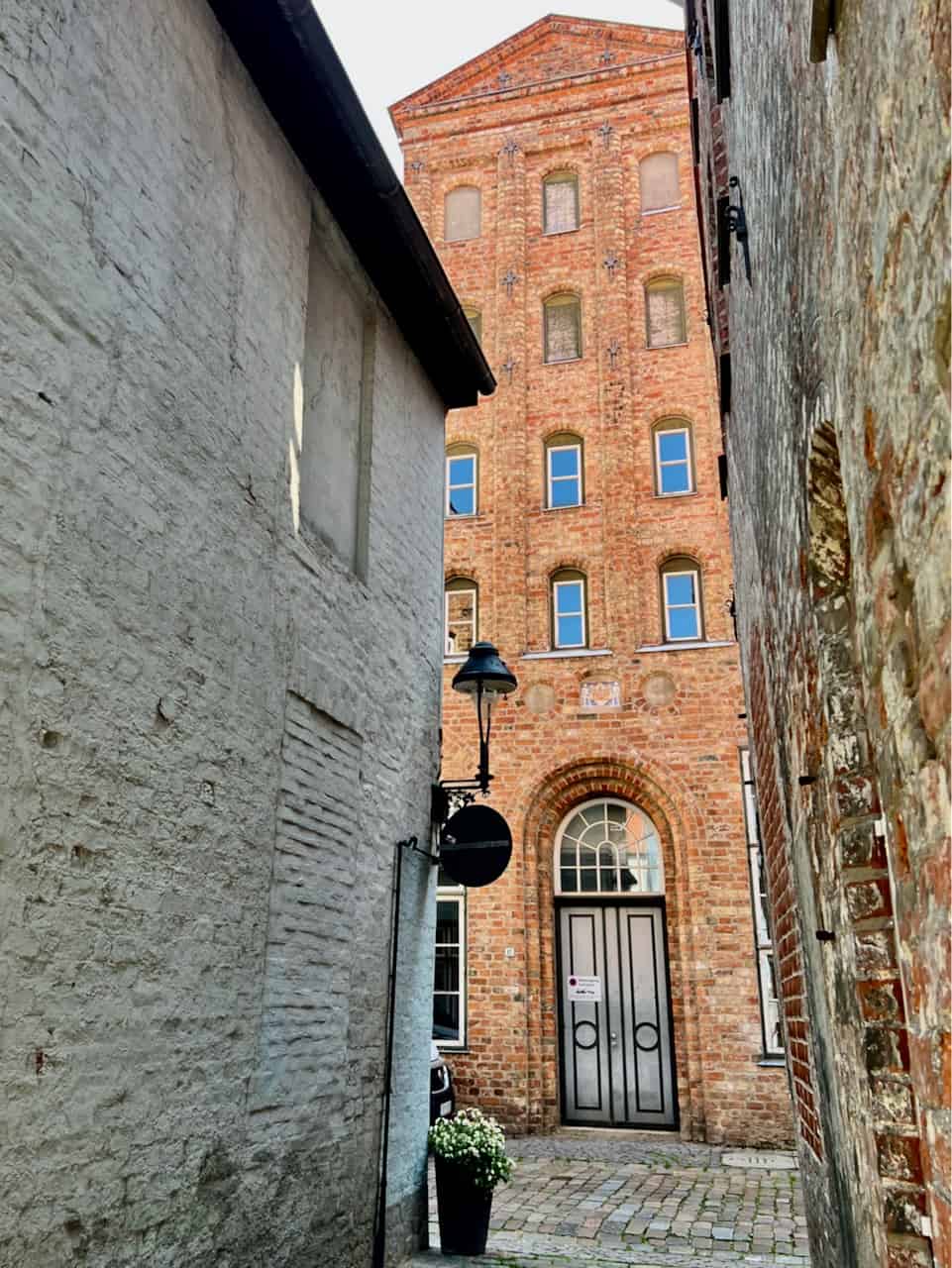
Alternatively, you can also join a tour of the courtyards and alleys in Lübeck.
7. European Hansemuseum
At the end of Engelswisch, take a right and head up to the Burg (castle) where you’ll find the fascinating Hansemuseum. This museum is dedicated to the history of the Hanseatic League, the rich merchant cities of northern Europe which were part of the league, and the thriving merchant trade in medieval times. There’s also a fascinating walking tour to follow the footsteps of the Hansa.
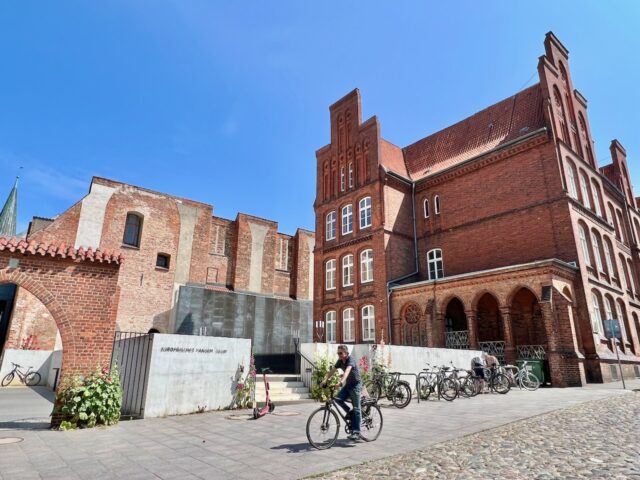
8. Heiligen-Geist Hospital (Hospital of the Holy Spirit)
From the museum, walk down to the nearby Burgtor, a well-preserved medieval city gate. Then follow Große Burgstraße to the Heiligen-Geist Hospital, a stunning 12th century building. The hospital was built in medieval times to take care of the city’s poor, sick and elderly, and continued to offer social services right into the 1960’s, making it one of the oldest social institutions in the world.
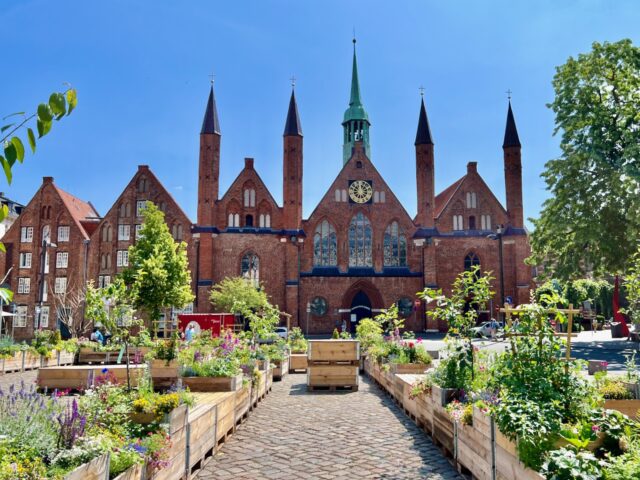
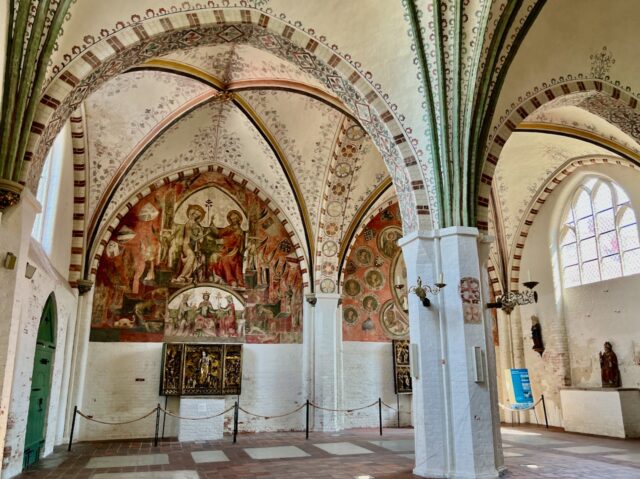
If you’re feeling hungry at this point, walk around the hospital to the Lübecker Kartoffelkeller, a vault restaurant that serves local specialties.
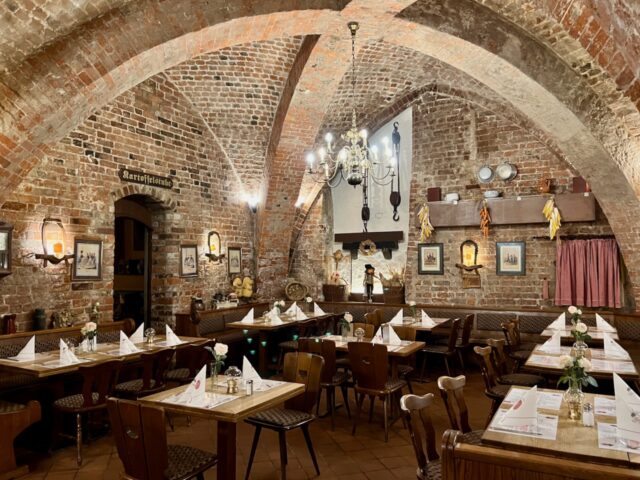
9. Königstraße
Continue down the busy Königstraße and you’ll find several noteworthy monuments to visit such as the Jakobikirche (St. Jacob’s Church), Behnhaus-Drägerhaus Museum (18th century mansions housing Romantic and modern art) and the Willy Brandt Haus (a museum dedicated to Willy Brandt, one of Germany’s most beloved statesmen, who was born in Lübeck in 1913).
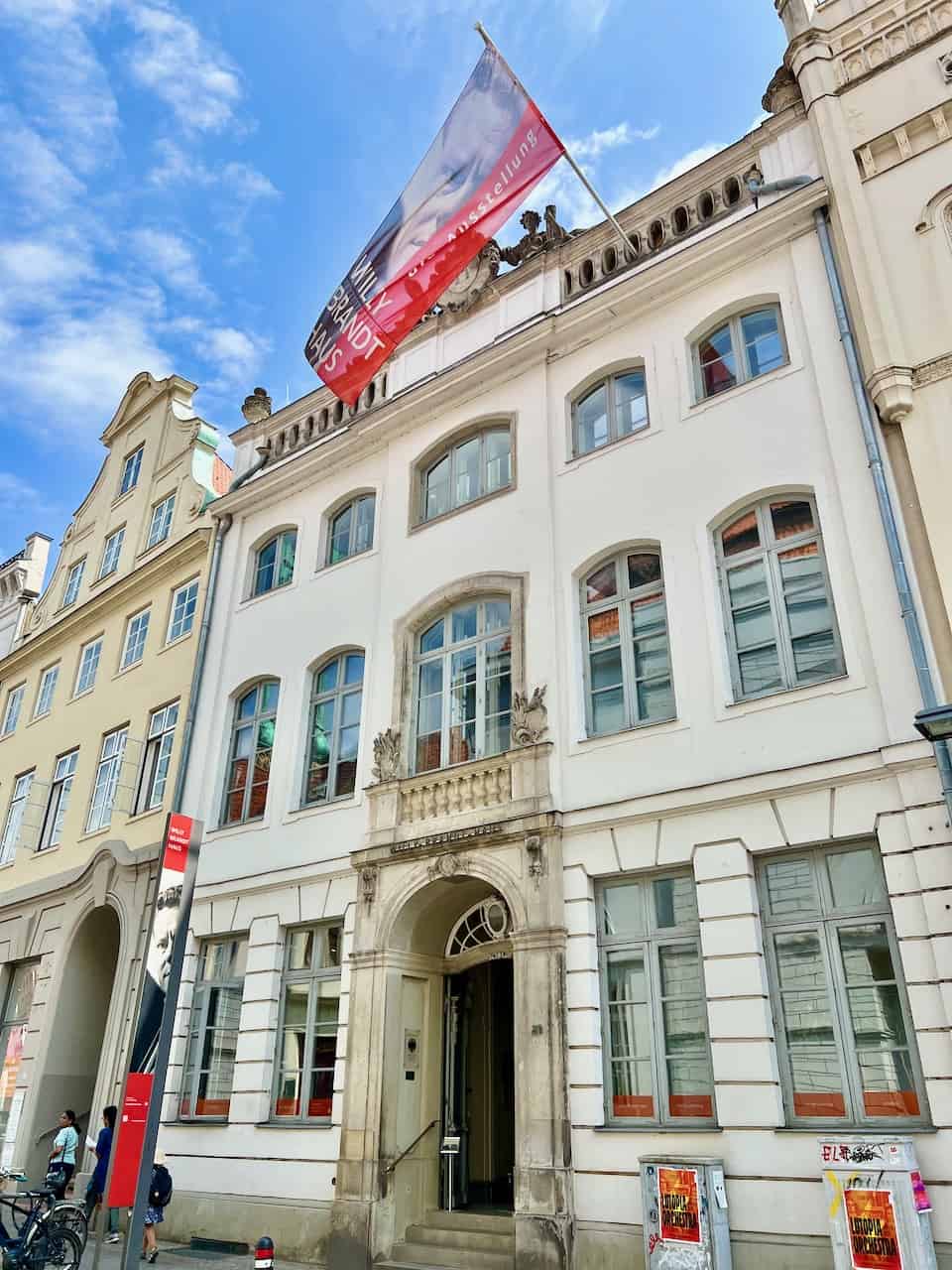
As you walk along the Königstraße, look out for gorgeous medieval houses tucked between more modern buildings.
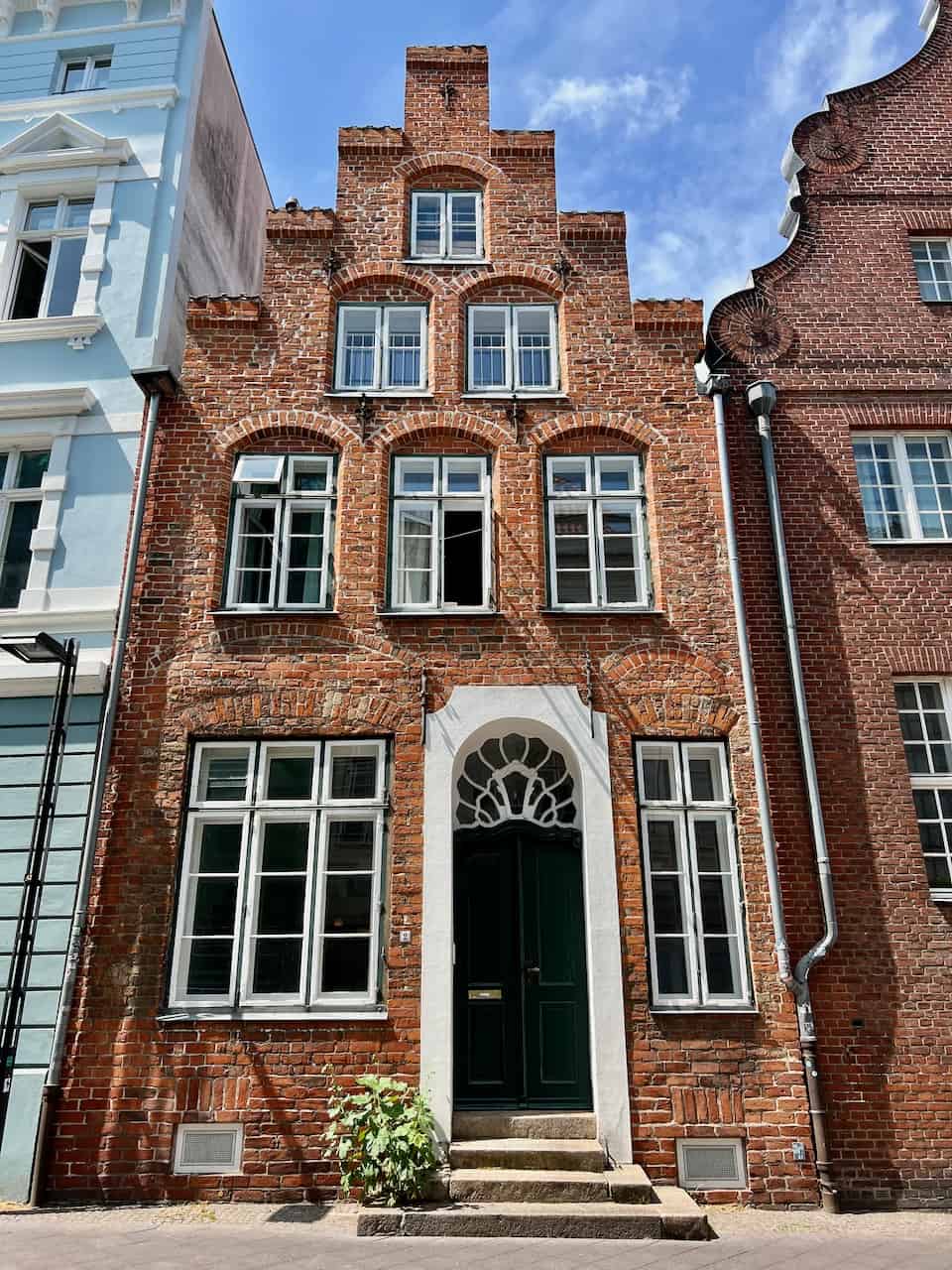
You can choose to follow the Königstraße to the Lübeck Cathedral or take a left into one of the side streets and explore the quiet lanes and alleys. Places to look out for include the Höveln Gang (a charming alley), the Museumsquartier St. Annen (a 15th century Gothic Monastery housing medieval and religious art) and the 13th century Half Tower.
10. Lübeck Cathedral
Step inside the magnificent Lübeck Cathedral, also known as the Cathedral of St. Mary. Work on the Cathedral started in 1173 by Henry the Lion in a Romanesque style but was later changed to the more prevalent Gothic style. Marvel at the intricately designed interior, including the awe-inspiring work by Bernt Notke (one of the most famous artists from the medieval period) such as the crucifix and rood screen with its astronomical clock.
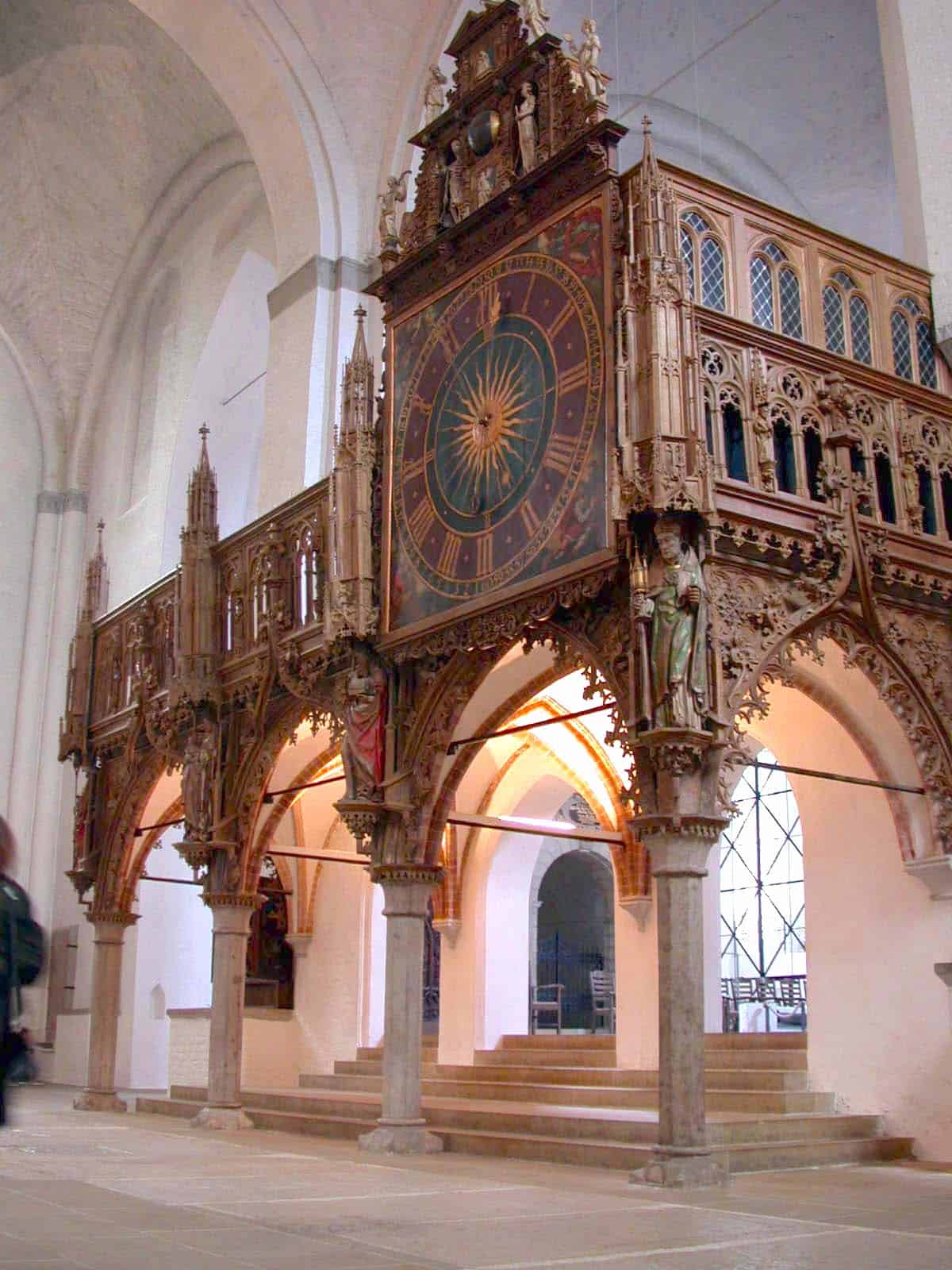
11. An der Obertrave
From the Cathedral, make your way to the An der Obertrave, a lovely promenade along the River Trave. The promenade is lined with gorgeous medieval and Renaissance houses, and packed with lively cafés in the summer months.
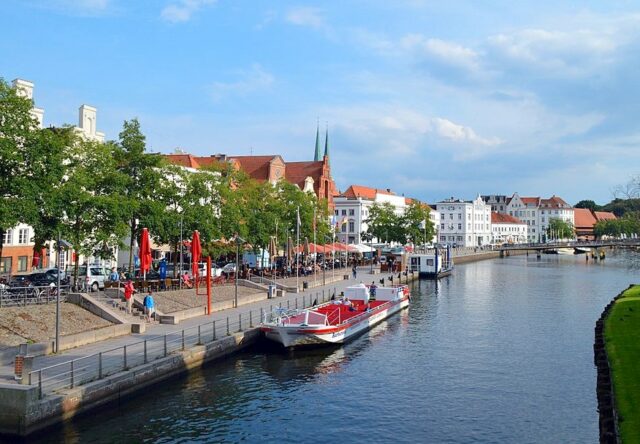
You can also opt to join a leisurely cruise along the River Trave. Cruise boats depart from the promenade at regular intervals (in the summer). Check out this cruise and walking tour package.

